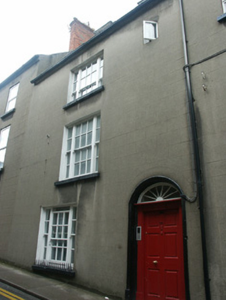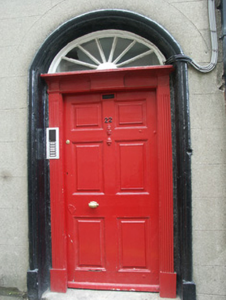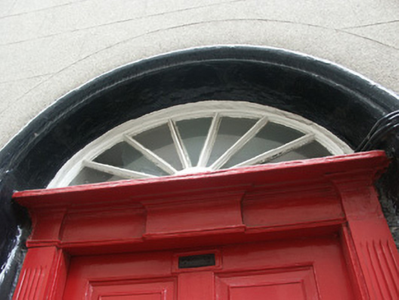Survey Data
Reg No
15502034
Rating
Regional
Categories of Special Interest
Architectural
Original Use
House
In Use As
Apartment/flat (converted)
Date
1790 - 1810
Coordinates
304689, 122083
Date Recorded
07/07/2005
Date Updated
--/--/--
Description
Terraced single-bay three-storey house with dormer attic, c.1800. Reroofed, c.1975, with dormer attic added. Refenestrated, post-1996. Now in use as apartments. Pitched roof with replacement fibre-cement slate, c.1975, clay ridge tiles, red brick Running bond and rendered (shared) chimney stacks, flat lined roofs, c.1975, to dormer attic windows, and cast-iron rainwater goods on rendered eaves having iron ties. Rendered, ruled and lined walls. Square-headed window openings in tripartite arrangement with cut-granite sills having iron sill guard to ground floor, replacement six-over-six and six-over-three (top floor) timber sash windows, post-1996, having two-over-two or two-over-one sidelights (timber casement windows to dormer attic; square-headed window opening inserted to top floor with uPVC casement window). Segmental-headed door opening with cut-granite step, moulded surround, fluted timber pilaster doorcase, and timber panelled door having fanlight. Interior with carved timber surrounds to door openings having timber panelled doors, timber staircase having carved timber balustrade supporting carved timber handrail, and remains of timber panelled reveals or shutters to window openings. Street fronted with concrete footpath to front.
Appraisal
A well composed house of the middle size representing an important element of the late eighteenth- or early nineteenth-century domestic architectural heritage of Wexford Town. Distinctive attributes including the vertical thrust of the massing, the elegant Wyatt-influenced tripartite openings, the Classically-detailed doorcase displaying good carpentry or craftsmanship, and so on, all identify the refined architectural design value of the composition. Having been reasonably well maintained or restored, the house continues to present an early aspect with the historic or replicated fabric surviving in place, both to the exterior and to the interior, thereby upholding some of the character or integrity of George's Street Lower.





